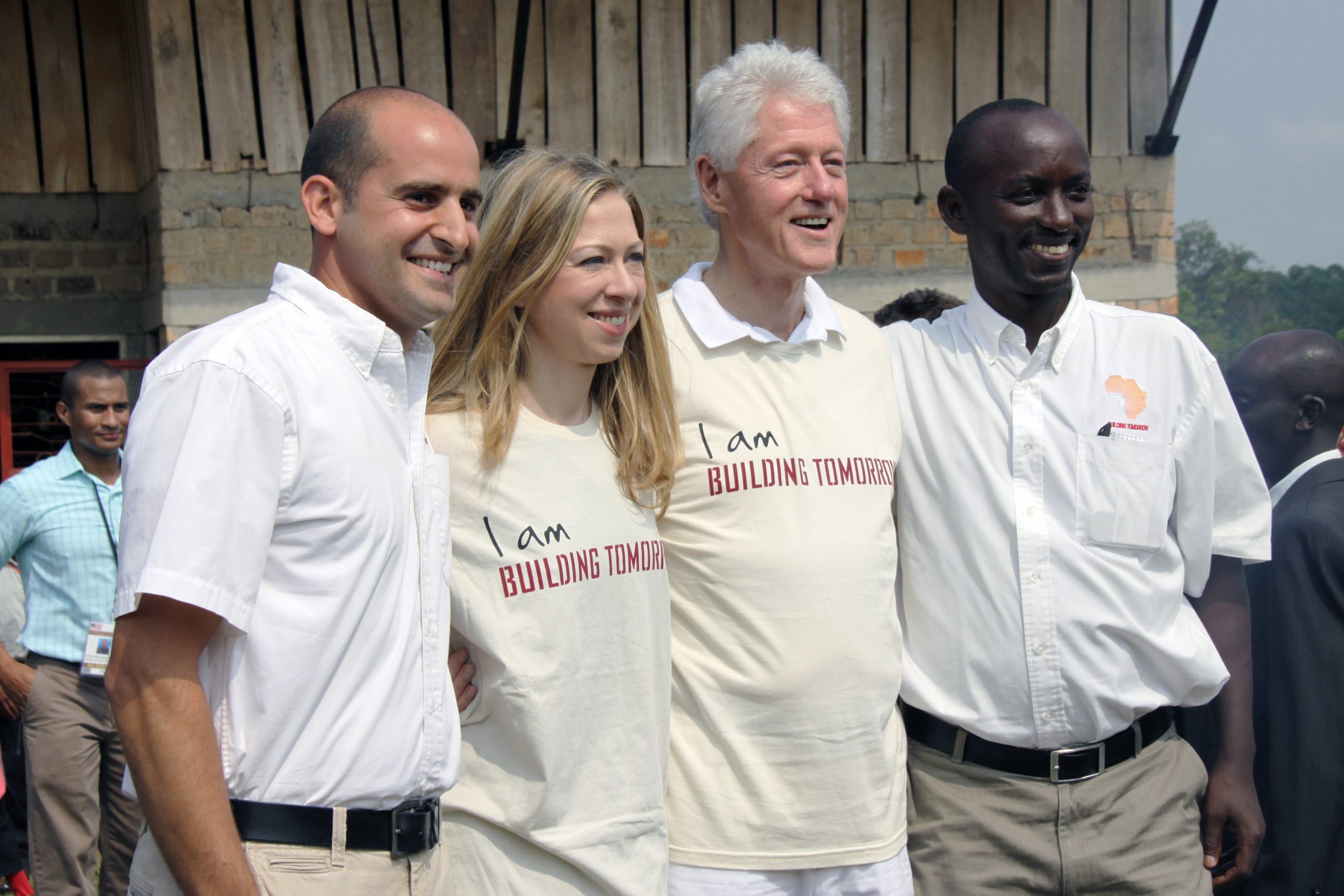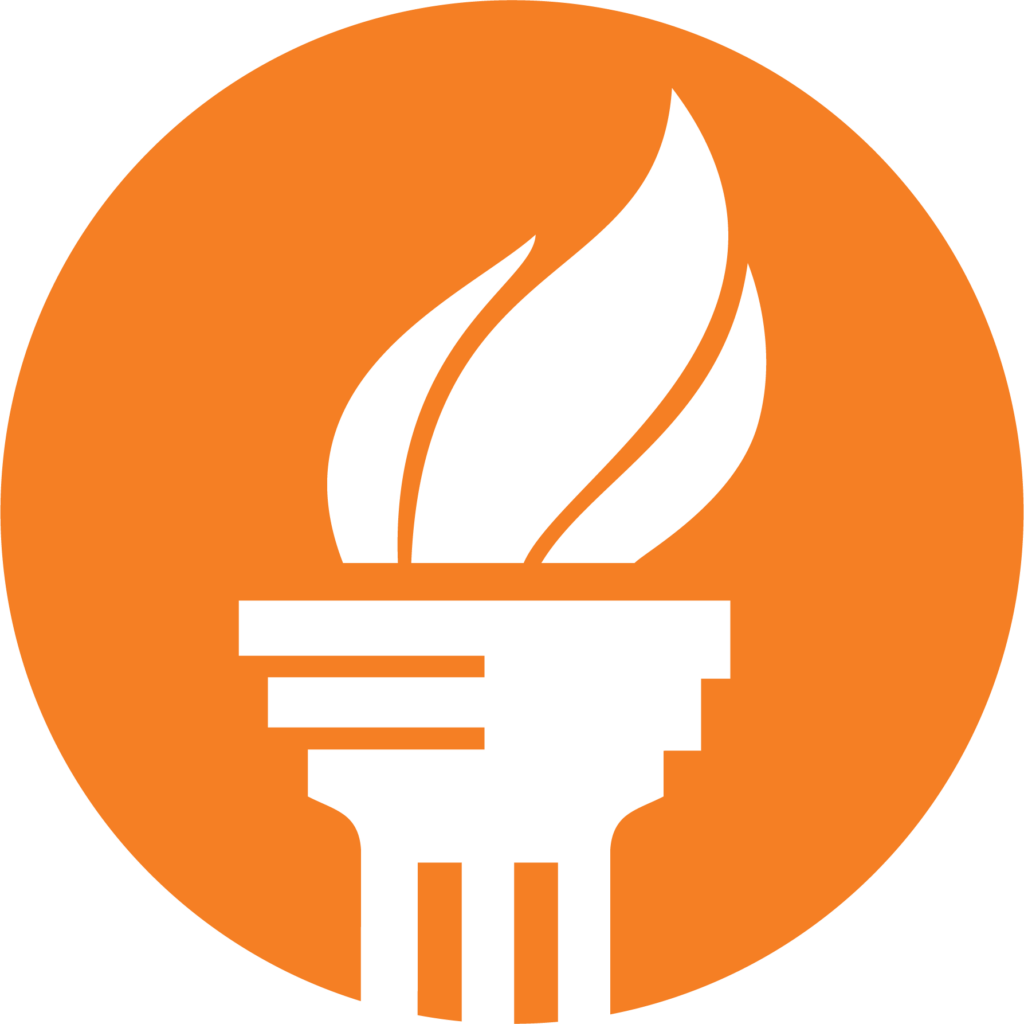On the day he graduated from William & Mary, with perhaps minutes left in his collegiate life, George Srour learned he was receiving the Algernon Sydney Sullivan Award. Surprise is a curious kind of applause. It arrives before you even realize your performance is over. He hadn’t known the Award’s long history or the community of servant-leaders it quietly connects across generations and campuses. He simply felt the jolt of recognition and, beneath it, a nudge: a reminder that a life can bend toward service and then keep bending.
Two decades later, Srour sits in Indianapolis, a continent away from the schools and communities that fill his days, describing the work that has consumed, refined, and focused him. His organization, Building Tomorrow, is a U.S.-based 501(c)(3) that advances a simple yet also strong proposition: if communities lead and governments partner, children – especially those who have fallen behind or dropped out – can gain the foundational literacy and numeracy that keeps them in school and lets them thrive.
“We teach a new kid how to read and do basic math every ninety seconds,” he says almost matter-of-factly. The number is incredible and almost unbelievable, like clockwork, with hope chiming 40 times an hour! In Uganda and Rwanda, that tempo adds up to hundreds of thousands of learners this year alone.
This is a story about how an ideal becomes machinery, how machinery becomes a movement, and how the movement can be perpetual. It’s also a field guide, for Sullivan Fellows, faculty mentors, alumni, and every student who suspects that leadership begins not with certainty, but with the habit of listening.
From Surprise to Trajectory
When asked what the Sullivan Award meant, Srour doesn’t claim a conversion moment. Service, he says, was already his “bend.” What the Award clarified, especially as the field of social entrepreneurship matured in the years after he graduated, was the legitimacy of a life spent on problems bigger than oneself. It signaled there was a field for this work, language for it, and more crucially, a community.
He tells a story familiar to many of us: the student journalist who learns to chase the issue, name the stakes, and look for solutions. “Storytelling,” he says, “isn’t an ornament in social impact; it’s the operating system. Most people you need as allies don’t yet know the problem you’re trying to solve. You have to make it real without drowning them in detail.” The Sullivan classroom hears this echo often, at Ignite Retreats, in Fellows seminars, and around late-night tables where conviction meets craft. Know your audience. Carry the facts. Lead with the human stakes.
Building Tomorrow: The Work
Mission: community-powered learning
Vision: literacy and numeracy for all children
Building Tomorrow runs on a few simple, well-disciplined ideas.
Roots to Rise (R2R)
An instructional approach inspired by Teaching at the Right Level (TaRL), R2R delivers roughly 40 contact hours of targeted lessons, in schools and communities, that meet each learner where they actually are. If a child can add and subtract but not multiply, you don’t march them into division. You repair the rung of the ladder they’re standing on. In systems that skip early assessment and move on before students are ready, this looks less like innovation and more a simple matter of fairness.
Inclusive Education
R2R is interwoven with social-emotional learning and Universal Design for Learning so that children with disabilities or divergent learning profiles aren’t asked to wait outside the circle of progress. In practice, this means adapting materials, training volunteers and teachers to notice and respond, and holding space for learners who are too often invisible in the data and in the room.
Community Education Volunteers (CEVs)
Here lies the model’s heartbeat: trained, proximate volunteers who mobilize households, run R2R camps, and sustain momentum. A randomized controlled trial (conducted with Youth Impact) found that just 160 minutes of phone tutoring by CEVs produced approximately 0.89 standard deviation learning gains, roughly 1.1 learning-adjusted years of schooling compared to control. It’s a bracing proof point for an old truth: when the work lives in the community, learning doesn’t stop when the school bell does.
Fellows & System Strengthening
Slick speeches and inspiring slogans don’t make education work at scale, only good systems do. It scales when systems change. Building Tomorrow places local Fellows and coordinators in districts and schools to embed practices, support teachers, and help governments adopt what works. The aim is not a perpetual foreign presence; it’s durable, locally owned capacity.
What the Numbers Say (2023)
- 179,903 learners reached through R2R in Uganda; among those reassessed, 85.0% advanced at least one level in literacy and 84.6% in numeracy.
- 3,993 Community Education Volunteers contributed 559,070 volunteer hours.
- 36,875 out-of-school learners enrolled in school; 1,461 out-of-school learners with disabilities enrolled; 1,918 learners with disabilities participated in R2R.
- At endline, 73% could read a paragraph (up from ~11% at baseline); those completing all four basic math operations rose from 0.9% to 33.3%.
And because transparency is both an ethic and an instrument, Building Tomorrow publishes a public monthly programs dashboard and maintains a deep archive of annual reports and research briefs. In 2023, the combined U.S./Uganda operation reported $6,866,781 in support and revenue against $4,211,628 in expenses (program services: $3,483,028), ending with $6,004,153 in net assets. It’s the balance sheet of a mission-focused organization that understands that their story is stronger when it is coupled to verifiable progress.
Why Both School and Community?
In Uganda, fewer than four in ten children who begin primary school finish all seven years. Attrition often comes early, driven by shaky foundational skills. Parents faced with the brutal arithmetic of poverty don’t see school “working” and reallocate a child’s day to labor that pays the bills today. If you only fix the school, you leave the out-of-school child behind; if you only run community camps, a child returns to an unchanged classroom that promptly loses them again. A dual-track approach that includes school and community raises the ceiling on impact.
This is where design logic is most important. Schooling is arguably one of the largest social innovations ever brought to scale; the point is to make it good for the child who actually walks through the door. And for the child who doesn’t? Bring the learning to them in ways that address their needs in a tailored fashion and then usher them back in with a skill set that sticks.
“Don’t Get Too High. Don’t Get Too Low.”
Good leaders often talk in counterweights. Srour does. “Every day there’s something to contend with,” he says. Government approvals lag. The rainy season washes out roads. A metric dips where you expected it to soar. “If you become an emotional thermometer, you won’t lead very well.” The aim is steadiness, to expect both breakthroughs and setbacks, to absorb each without losing the focus.
Srour credits listening as his foundational practice. He isn’t romantic about it; he’s practical. Show up. Listen longer than your impulse to talk. Learn enough to act. Repeat. It’s a drum we beat across the Sullivan Fellows curriculum and in our Ignite Retreats: listening is not passivity; it’s the quickest path to relevance.
Leadership, in this telling, is less about dominating a room than about conducting a conversation between reality and possibility.
The Pivot That Changed Everything
Building Tomorrow did not begin as a learning-acceleration NGO. Building Tomorrow 1.0 built schools, 85 of them across Uganda, with roughly 25,000 children now waking each day to a classroom those projects made possible. Brick by brick, a geographical footprint of access emerged.
But then the organization asked a harder question: are children learning in those rooms? When the answer proved mixed, Srour and his team flipped the script. Buildings matter, but they don’t guarantee learning. In its new phase, Building Tomorrow centers on foundational literacy (Roots to Rise), community-based volunteer teachers, inclusive classrooms, and changing how the system works, measuring success by student learning, not by how many activities are completed.
There’s a lesson here for every social entrepreneur: love the mission more than your model. Be willing to change the tool when the goal demands it.
Funding the Machine Without Losing the Music
This year, Building Tomorrow will raise just under $8 million, about three-quarters from foundations, with a majority of funding from outside the United States. The geographic mix reflects where global education philanthropy currently tilts and where government and multi-lateral partnerships can be combined to create scale. In the U.S., there are six people. In Uganda and Rwanda, there are nearly 370. The core stays small; the field is wide.
Why mention these mechanics in a story meant to inspire Sullivan students? Because inspiration that hides the invoice can’t be replicated. The Fellows in the Sullivan ranks who launch ventures in the future should clip this paragraph and tape it above their desks. Inspiration is fine, but back it with proof – hope paired with evidence!
Rwanda, and the Rhythm of Opportunity
This year, Building Tomorrow launched in Rwanda, leveraging talent and playbooks developed in Uganda. Expansion here isn’t about empire expansion; it’s simply adjacency. “No two days are the same,” Srour says, not as a complaint but as gratitude. Challenge is the antidote to apathy. When opportunity knocks, a ministry ready to try, a district where a local champion emerges, be close enough to the door to hear it and prepared enough to answer.
Will there be a Building Tomorrow 3.0 in a third country? The honest answer is: we’ll see. Opportunism isn’t shady here, it’s practical. In purpose-driven work, you stay alert to openings as they appear instead of insisting the world match your original plan.
Lessons We Can Carry
For our Fellows and the broader Sullivan community, Srour’s story distills into a handful of principles worth committing to memory:
- Begin by listening. It’s the shortest route to relevance and the cheapest way to avoid unforced errors.
- Love outcomes more than activities. If your beautiful program doesn’t move the needle you say you care about, change the program.
- Design for inclusion from day one. If your model only lifts those who were easiest to lift, it isn’t equal opportunity; it’s selection.
- Publish your work. Dashboards, annual reports, research briefs, transparency builds trust.
- Work the dual track. Meet the learner where they are and fix the system they return to.
- Stay emotionally even. Don’t let the day’s weather dictate your leadership climate.
- Tell the right story to the right audience. Then ask, clearly, humbly, specifically for what you need.
Circles that Close
Every ninety seconds, somewhere in Uganda or Rwanda, a child’s world grows a size. In the math of impact, the rest of us grow too: in patience, in ambition, and in the willingness to change our minds and our methods for what matters.
George Srour didn’t need the Sullivan Award to tell him who he would become or the path he would follow. Still, at his graduation from William & Mary a life spent turning recognition into results began…or perhaps simply continued along. Sullivan Fellows can do the same if they choose: begin by listening, finish by learning, and keep your heart and mind steady in between.
The clock is ticking. There is work to do before the next ninety seconds pass.
Back to all News items.


